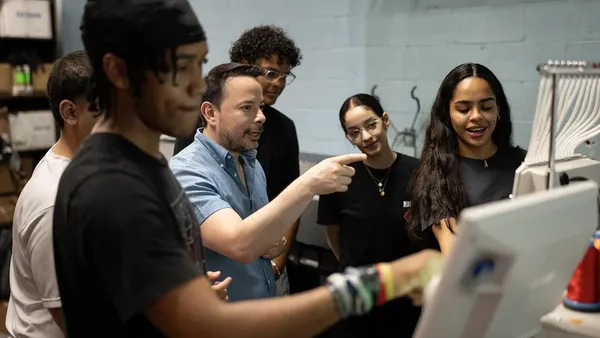Dive Brief:
- Merging math and art in curriculum may result in higher math scores and more deeply embedded learning, University of California, Riverside, math professor John De Pillis writes for eSchool News, outlining eight reasons why stitching the two together helps students.
- Art can help students visualize math concepts and bring some creativity and fun to learning while stimulating the brain.
- Some mathematical expressions, like algorithms, can generate artistic outputs, bringing the two subjects together in a way that can help students approach math in a “more open-minded” way, De Pillis wrote.
Dive Insight:
Math and art may seem at first glance to be strange bedfellows, until one recalls the great word of Leonardo da Vinci or even Piet Mondrian. The use of mathematical concepts, whether the Golden Ratio or parallel lines, in great art is hardly new. While artistic expression is often thought of as creativity without bounds, there are always limits — even the canvas has borders.
Curriculum designers looking to attract more students to math, helping them untie the subject from its staid confines, would do well to bring a bit of art into the world of numbers. Online resources abound, from the National Education Association’s lesson plans that tie math to music, art and Da Vinci to book lists from the Seattle Art Museum, some of which even tie art to the Common Core Math Standards.
Flooding mathematic concepts with some creative flair may help spark a new interest in students — uncovering a hidden mathematician, budding artist or perhaps a savant who can pass their excitement forward.










